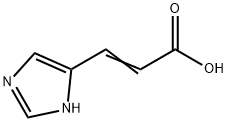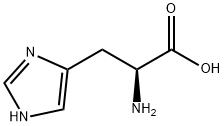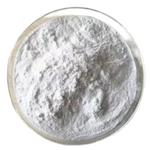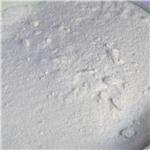Chemical Properties
White to beige fine powder.
Uses
Urocanic Acid is a biomarker in the fecal metabolic profiling of breast cancer patients.
Definition
ChEBI:
Urocanic acid is an alpha,beta-unsaturated monocarboxylic acid that is prop-2-enoic acid substituted by a 1H-imidazol-4-yl group at position 3. It is a metabolite of hidtidine. It has a role as a chromophore and a human metabolite. It is an alpha,beta-unsaturated monocarboxylic acid and a member of imidazoles. It is a conjugate acid of a urocanate.
Biological Functions
Urocanic acid, produced in the upper layers of mammalian skin, is a major absorber of ultraviolet radiation (UVR). Urocanic acid (UCA) is formed in the upper layers of the epidermis where filaggrin, a histidine-rich filamentous protein produced after caspase-14 cleavage of profilaggrin, is broken down by proteinases into component amino acids.
General Description
4-Imidazoleacrylic acid also known as urocanic acid is a natural metabolite derived from histidine. It is majorly used as a UV chromophore with a strong absorption spectrum in the UV-B region in the range of 300-280 nm.
Synthesis
A method of producing trans-urocanic acid, which involves treating D-glucose with aqueous ammonia and formalin in molar ratio D-glucose: aqueous ammonia: formalin equal to 1:24:2.7, in water in the presence of basic copper carbonate at temperature 85-90°C for 3 hours to form (1S,2S,3S)-1-(1H-imidazol-4-yl)-butane-1,2,3,4-tetrazole, which is extracted in form of a hydrochloride. Through periodate splitting in water, the obtained (1S,2S,3S)-1-(1H-imidazol-4-yl)-butane-1,2,3,4-tetrazole is converted at room temperature to 1H-imidazole-4-carbaldehyde, condensation of which, in acetic anhydride in the presence of anhydrous potassium acetate at temperature 120°C for 2 hours, leads to formation of trans-urocanic acid with subsequent extraction thereof from the reaction mass.
Purification Methods
Crystallise the acid from water and dry it at 100o. The trans-isomer [3465-72-3] has m 225o (229-230o, 230-231o or 231o(dec, from H2O) and pK1 3.5 and pK2 5.6, and the picrate has m 225o(dec, from H2O). The cis-isomer [7699-35-6] has m 175-176o (178-179o or 180-184o dec, from H2O) and pK1 3.0 and pK2 6.7, and the picrate has m 204o (from H2O). [Beilstein 25 H 124, 25 I 536, 25 II 121, 25 III/IV 786.]



